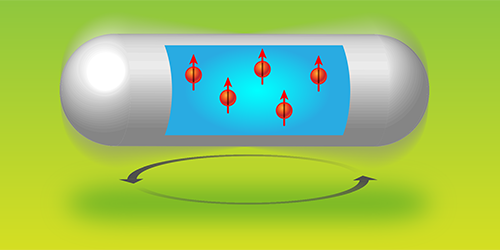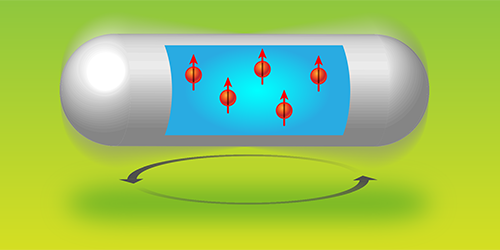Fast Rotation Polarizes Water
Rotate a metal rod fast enough and the rod will spontaneously magnetize, with the spins of its electrons all aligning so that they point in the same direction. Tycho Sleator of New York University (NYU) and his colleagues wondered if a similar method could polarize electrons in brain tissue samples to help improve imaging. This question led to studies that looked at rotation-induced polarization of electrons in this largely water-based material. The imaging project ultimately died, but Sleator and his NYU colleague Mohsen Arabgol continued the line of research, studying whether the spins of nuclei—and not just electrons—might align if water was rotated at high speeds. They have now demonstrated this effect.
In their experiments, the team filled a 2 mm by 8 mm hollow section of a rod with water and set the rod twirling. They then used a nuclear magnetic resonance (NMR) technique to measure the rotation-induced magnetization of the water. For a rotation rate of just over 4000 revolutions per second (rev/s), Sleator and Arabgol observed a 1% increase in the water’s magnetization over the small magnetization effect induced by the NMR technique. This excess magnetization rose to just over 3% at 13,500 rev/s.
This demonstration comes over 100 years after Samuel Barnett discovered the electronic counterpart of this effect—known as the Barnett effect—in 1915. The team says that their realization of the “nuclear” Barnett effect was only possible because of recent technological advances that allow for very-high-speed rotation of materials.
This research is published in Physical Review Letters.
–Katherine Wright
Katherine Wright is a Senior Editor of Physics.





